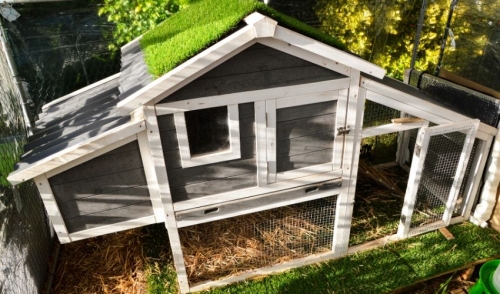
Chicken Coop Plans: Creating a Delightful Chicken Home
Fall is the best season for a family to prepare for the delightful experience of welcoming a small flock of chickens to the backyard. For poultry newcomers, fall gives them plenty of time to research the breeds they’d like to welcome, acquire, design or create and research chicken coop plans or build a coop, and read up on chicken care.
Perhaps there’s even time to visit other families who already have chickens or take a beginning chicken class at a nearby farm store or nature center.
This is the first in a series of blogs that will detail the construction of a sturdy, attractive coop. It’s not always necessary to build a coop, but construction is a fun family learning experience.
Characteristics of an ideal coop
Whether a coop is made by a family from scratch, purchased as a kit, or crafted from an existing building, these characteristics are necessary for chickens to be comfortable, safe, and productive.
- Sized right: Be sure to have at least four-square feet of coop floor space per hen. More is even better and attaching an outdoor run to the coop adds living space. Coops can be as small as eight or ten square feet, suitable for two hens. More common backyard coops are 20 to 30 square feet and designed for four to six hens. If space is tight, consider bantam chickens. They only need half to a third as much space as full sized birds.
- Comfort: Coops should provide plenty of ventilation, yet thwart chilly drafts come winter. Hens enjoy a cool breeze on sultry summer evenings and need to be protected from winter’s harsh winds. Great coops allow opening windows or vents when the weather is warm yet closing them down when frost arrives.
- Protection: Raccoons, opossums, mink, and a host of other furry predators love eating fresh chicken. Mosquitoes and gnats enjoy a meal of blood. Good coops have heavy duty wire mesh on the outside and mosquito netting on the inside stretched over windows to keep predators at bay. A sturdy door, locked each evening after the chickens go to bed, keeps nocturnal predators out.
- Furniture: Chickens sleep while standing on a perch. A pole or 2×4 with rounded off corners a couple of feet above the floor, makes a comfortable sleeping structure. Hens prefer to lay in nest boxes, which also keep eggs clean. Coops should have at least one nest per four birds. Many small coops have a hinged door that allows for egg collection without entering the coop.
- Feeders and waterers: These should be easy for hens to reach and humans to clean and fill.
- Light: Chickens need light. Windows should be positioned to gather as much natural daylight as possible. In the northern regions, positioning a coop so windows are on the south side helps gather the most sunshine and warmth on cold winter days.
- The weather: Chickens love frequent drinks of clean fresh water, but a wet coop is an invitation to disease and foul odors. The coop must have a good roof that will always protect the interior from rain and snow.
- Electricity: It’s not necessary to have electricity to the coop, but it makes care of chickens easier, especially in cold climates. Having electricity allows adding artificial light on dark winter days. That increases egg production. Also, a great convenience is a waterer with an electric heating unit inside it. This eliminates the need to keep replacing frozen waterers with fresh water.
Ideal coops should look great in the yard and be part of a backyard decor. Access should be easy, so hens can be examined, feeders and waterers filled, and cleaning a snap.
Four ways to acquire a coop
- Modify an existing building: Often one of the easiest and least expensive ways of creating a backyard coop is to modify an existing building. A large corner of a garage or storage building may work well. Modification may be as simple as making a frame of 2×4 lumber, framing in a door, and covering the interior with chicken wire. Add a feeder, waterer, nests and roost and, bingo, it’s ready to house the flock. Cut a pop hole door in the exterior, create a fenced outdoor run, and the chickens have a snug home to sleep in and escape foul weather and a pleasant outdoor place to loiter and search for tasty insects and seeds. Many home stores sell pre-built or kit garden sheds. These can be modified into a coop.
- Buy a pre-built kit: Most places that sell chicks and chicken supplies sell coop kits, and they are also available from chick hatcheries and online. Most kits are small and lightweight. Many allow the purchase of an attached outdoor run. Some kits seem quite frail and may be best suited for people trying chickens for the first time. If they grow to love their hens, they may graduate to a larger or more elaborate coop. Some coop kits are high quality and durable. Take a close look at materials before buying.
- Buy a custom-made coop: Many garden and farm stores sell custom made coops. These are often high quality. They look great and are durable but may be relatively expensive. Well-made coops are heavy, so make sure the seller is willing to deliver it.
- Building a coop: This is an ideal way to enter the backyard chicken hobby. Later blogs featured on Scoop from the Coop will detail why and how to build a coop perfect for any yard.
The feed room is proudly brought to you by Nutrena and Cargill Animal Nutrition. Learn more about us here. You can see the original blog post here.
